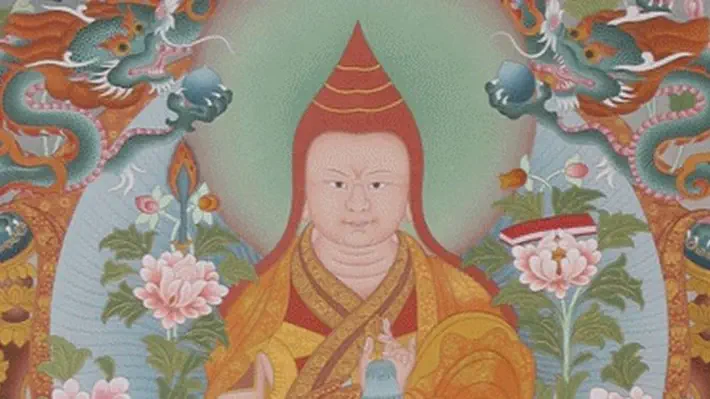 Shambhala
ShambhalaA Brief Fantasy History of a Himalayan: Autobiographical Reflections
Thinley Norbu is the nyingma lineage holder with the most exquisite and refined mastery over the English language. // In this autobiographical narrative, Kyabje Thinley Norbu Rinpoche sets a magical scene as he describes his early years in “Snowland” (Tibet) as one of seven children of the renowned Nyingma master Kyabje Dudjom Rinpoche. After touching on his youthful training and experiences, Rinpoche describes how…
 SHAMBHALA
SHAMBHALAThe Adornment of the Middle Way
Shantarakshita's Madhyamakalankara with Commentary by Jamgon Mipham // Finally reading it. Laughing oh so hard at the lengthy introduction. Sometimes I wonder it would be worthy being a Buddhist for the interdependence of scholastic in-jokes if only.
 Shambhala
ShambhalaOrnament of the Great Vehicle Sutras
This new book contains important commentaries by Lama Mipham and Khenpo Shenga on one of the major classics of Indian Buddhism: The Ornament of the Great Vehicle Sutras by Maitreya. Translated by Dharmachakra Translation Committee under the guidance of Chokyi Nyima Rinpoche. Published by Shambhala Publications (1040 pages). // The Buddhist masterpiece Ornament of the Great Vehicle Sūtras, often referred to by its Sanskrit title, Mahāyānasūtrālaṃkāra, is part of a collection known as the Five Maitreya Teachings, a set of philosophical works that have become classics of the Indian Buddhist tradition. Maitreya, the Buddha’s regent, is held to have entrusted these profound and vast instructions to the master Asaṅga in the heavenly realm of Tuṣita.
 SHAMBHALA
SHAMBHALAMudra: Early Poems and Songs
A mudra is a symbolic gesture or action that gives physical expression to an inner state. This book of poetry and songs of devotion, written by Chögyam Trungpa between 1959 and 1971, is spontaneous and celebratory. This volume also includes the ten traditional Zen oxherding pictures accompanied by a unique commentary that offers an unmistakably Tibetan flavor. Fans of this renowned teacher will enjoy the heartfelt devotional quality of this early work.
 Shambhala
ShambhalaThe Wisdom Chapter
Jamgön Mipham’s Commentary on the Ninth Chapter of The Way of the Bodhisattva. // Mipham interprets Shantideva according to the Nyingma view, which was at variance with the dominant interpretation in Tibet at that time. His commentary stirred up furious debate, which is also beautifully captured in this volume.
 shambhala
shambhalaJamgon Mipham Rinpoche: A Reader's Guide
This article is a reader's guide to the great Rimé master Mipham Rinpoche (sometimes written Mipam), who reinvigorated the Nyingma tradition in the late nineteenth and early twentieth centuries.





